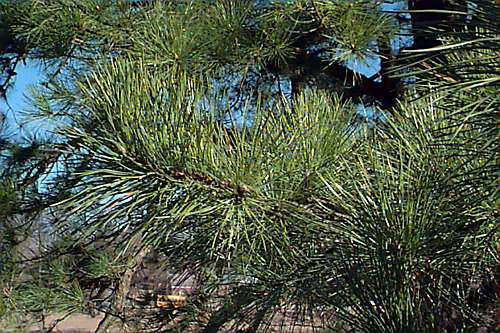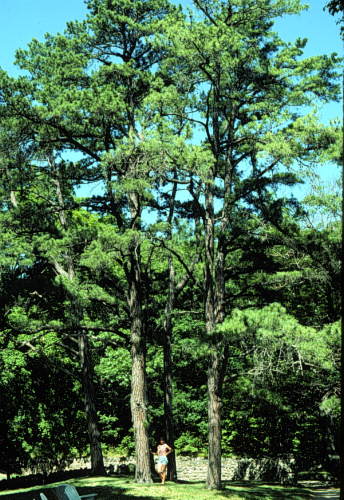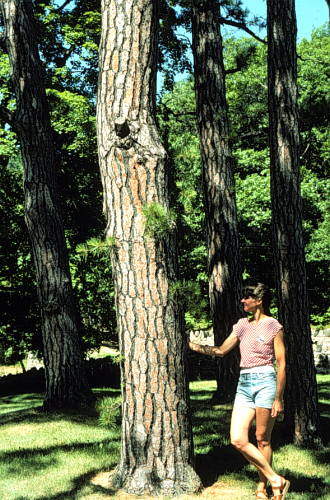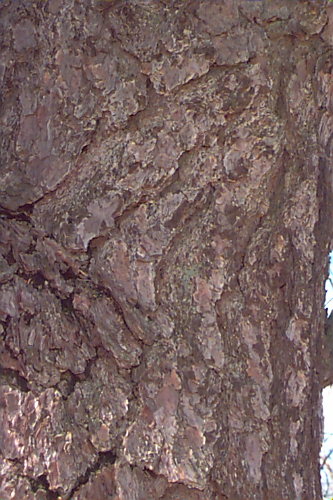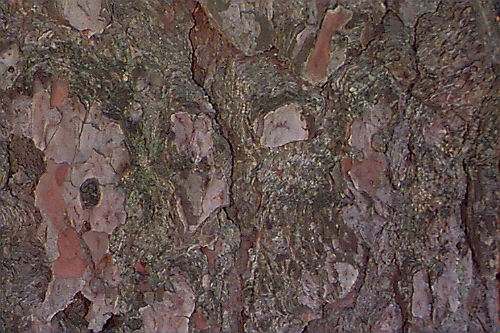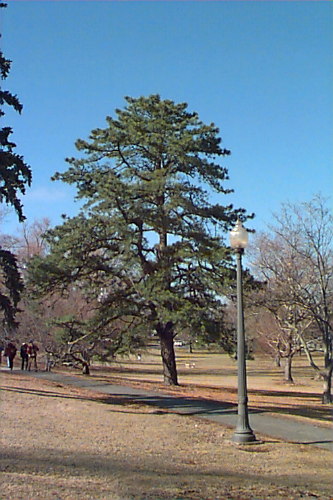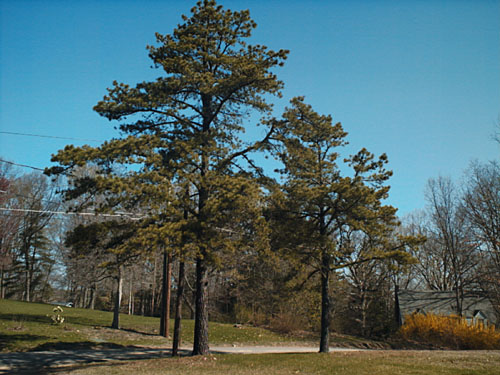Pinus rigida
Pitch Pine, Northern Pitch Pine
Pinaceae
ExpandHabitat
- native to Eastern North America
- cold hardy to zone 4
- often found on poor, sandy soil that fails to support other species
Habit and Form
- evergreen tree
- open conical shape, becoming more irregular with age
- typically 40 to 60' wide and 30 to 50' wide
- medium texture
- medium growth rate, slows down as tree reaches mature height
Summer Foliage
- stiff and slightly curved needles
- 3 needles per fasicle
- margins serrate
- needles twisted and roughly 4" long
- dark green color, with new growth having a yellowish hue
Autumn Foliage
- no fall color (remains green)
- needles persist 2 years
Flowers
- monoecious
- no ornamental value
Fruit
- light brown cone
- ovoid-conical in shape, 2 to 2.5" long
- held in clusters of 3 to 5
- cones tend to pesist on the tree for a few years
Bark
- light brown
- armor plated bark with deep fissures
- new stem bark is rough and spiny
Culture
- light sandy soil prefered
- needs well-drained and acid soil
- full sun
- salt tolerant
Landscape Uses
- good for native forest setting or in poor soils
- interesting for its open, unusual and often picturesque growth habit with age
Liabilities
- may be difficult to grow under cultivation
- does not compete well with other plants on good growing sites
ID Features
- needles in 3's, twisted and serrated
- armor-plated bark
- tree has a fairly open growth habit for a pine
- short, small branchelets arise directly from trunk and main branches
- persistent cones
Propagation
- by seed, no treatment is needed for good germination
Cultivars/Varieties
'Sand Beach' - A selection found growing along a beach in Maine, this is a low-growing, prostrate form with densely borne, medium green foliage of heavy texture. Its salt tolerance, cold hardiness and acceptance of poor soil makes this selection attractive to gardeners with poor cultural conditions.
'Sherman Eddy' (also known as 'Little Giant') - This slow-growing, dwarf rounded form was found in the Pocono mountains of Pennsylvania. It bears bright green, long needles and is suitable for cultivation in poor soil.
